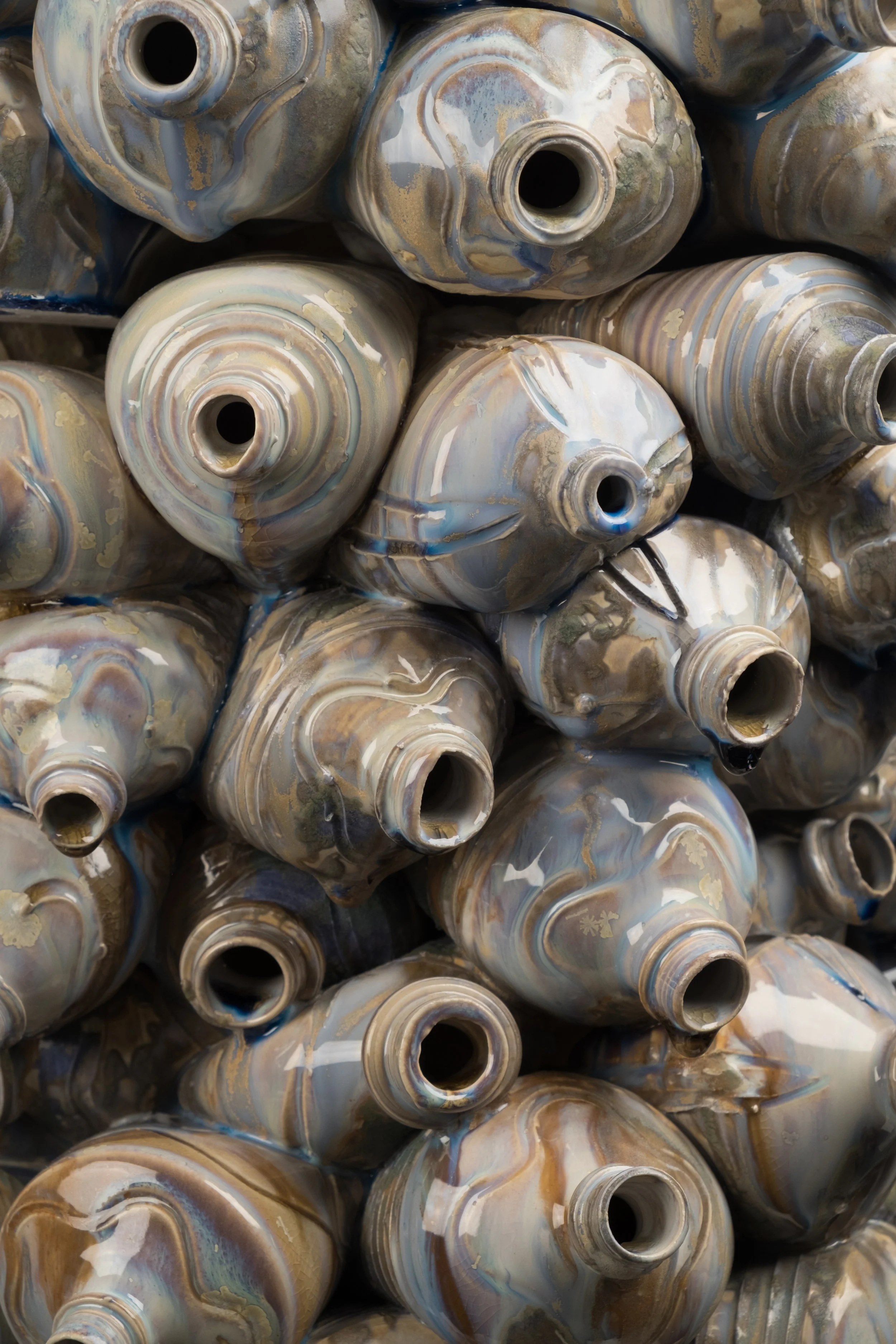Plastica
Thinking about plastic
I joined wheel-thrown plastic bottle forms together, trying to mimic the structure of Actinodendron arboretum, commonly known as hell’s fire anemone.
This was my first attempt to create onature and solution lastic forms, imagining a fictional species that evolved to thrive in a polluted Earth.
Slip Casting
When I started my post-bac program in New Paltz, I was introduced to slip casting.
Using molds of plastic bottles, I started to incorporate plastic elements more accurately into my sculptures.
These organisms I imagined incorporated forms of plastic bottles that became flowers, seeds and stems.
Pause
Unfortunately, I was constantly in a dilemma of why to talk about plastic polution in ceramics.
My justification always relied on how ceramics has been a material that held much respect and had contributed to the development and advancement of human history, in contrast of how plastic, a recent innovation, has been one of the greatest innovation but fail to satisfy the need for conservation of our environment.
However, ceramics became the core material of humanity due to our constant innovations to it; if we kept studying and improving on the technology of plastics, it perhaps would lose much of its negative associations.
… …
Yet, these justifications always felt unconvincing. So I decided to pause my work on “plastica” and explore something else.













